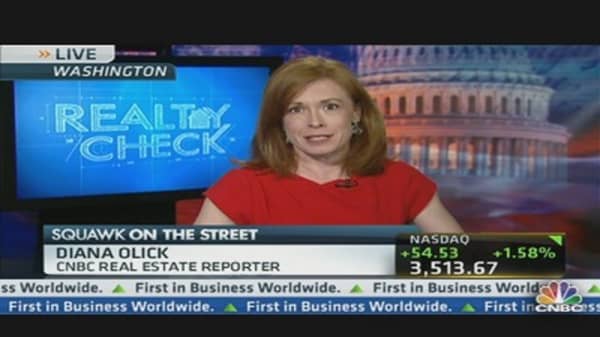Home prices saw their largest annual gains in six years reaching double digits on a widely watched monthly report.
Prices in the nation's top ten and top twenty markets rose 10.3 percent and 10.9 percent in March from a year ago on the S&P/Case-Shiller Home Price Indices.
These are the highest annual returns since 2007 for the two. Nationally prices rose 10.2 percent annually in the first quarter.
(Read More: Boom Is Back: Home Prices Jump Most in Seven Years)
"We are still coming off the bottom," said S&P's David Blitzer. "Right now they're healthy, if we go far beyond this, we're talking in six months or a year from now, twenty percent gains. Then I think we start getting worried about bubbles again."




